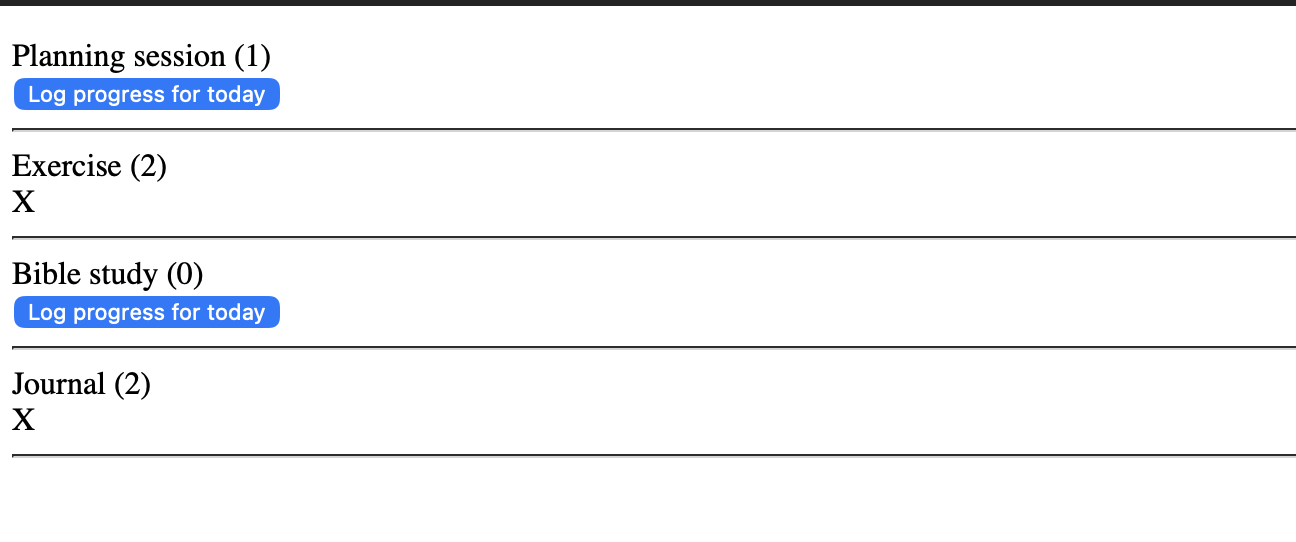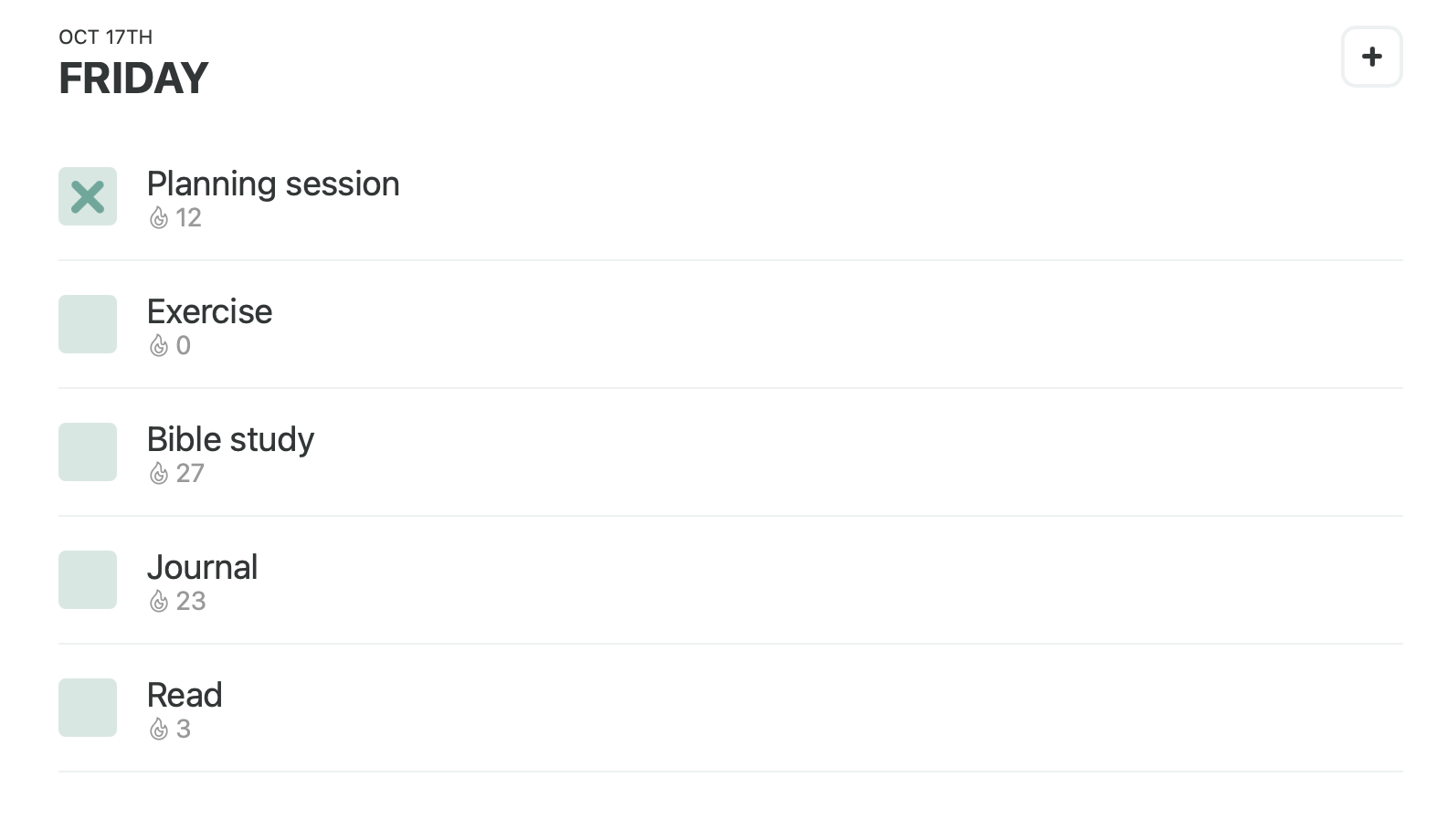I wanted to share three screenshots from different stages of TinyWins’ daily habits view. This was inspired by Gregory Ng’s recent post and in particular the part on vulnerability and the process:
For designers, this means embracing vulnerability. Showing the sketches. The failed prototypes. The weird experimental versions that don’t quite work but are fascinating.
Perfection is boring. Process is compelling. And pro tip: being able to show that process, celebrate it’s flaws, and present it’s story is the secret to stand out in this crowded job market.
This first screenshot was taken on September 20, 2025 – two days after I started the project. Here I was trying to block in the major components behind the daily habits page – your goals, current streak count for each goal and the ability to log whether you did the habit.

I had quite grand visions for where I wanted to take this page (perhaps a post for another day). But for a few days as I started tracking my daily habits, I realized there was something in its simplicity. While I had grand ideas in mind – like laying out a 7-day week layout to show your streak – when I asked myself what the essence of daily tracking was, I realized that just a single column with toggles to capture quickly was enough.
Simple works especially well on mobile which is where I found myself mostly recording my daily progress.
On October 14, 2025, the daily habits page looked like this.

A bit more cleaned up, but all the elements from the first screenshot are all there.
As an homage to Jerry Seinfeld’s “Don’t break the chain” method, I used an X to indicate that the user had completed a goal. However, I wanted to go with a green color instead of red as I think of stop or something negative when I see the color red on the screen.
I also added the current date. This was to orient the user that it is today’s tasks. The date is also derived from the user’s timezone that they have selected in setting up their profile. While I don’t think it is a necessary piece of information as the whole concept of the page is to record activities for the current day, I think it looks nice visually. We’ll see if I decide to remove it later.
The last screenshot is one I took three days after the last on October 17, 2025.
There are two main changes I made:
- Replaced X’s with checkmarks
- Calmed the boxes down a little

The X’s still felt like a negative thing – as if I did something wrong. I wanted to give the sense of accomplishment – a tiny win! So I swapped the X’s for check marks. This made me feel more positive of my daily accomplishments.
The boxes felt like they were screaming at me. The colors were always there and quite large in comparison to the elements around it. I had a look at my favorite task manager, Things and how they did their checkboxes and took inspiration.
It is an empty box to indicate you haven’t done the daily habit. But once you mark it off, that’s where the color pops and you see the checkmark.
I’m quite happy with the way the daily habits page looks now.
While in my mind, initially when I had set out to build TinyWins, I had quite a different vision, I realized that there is something powerful in the simplicity of the chain method in itself – a red marker, calendar and a streak. These simple elements are enough to keep me accountable for the habits I wanted to achieve and so I’m constantly finding myself as I keep working on TinyWins, how can I do less, but better?
These screenshots are saved in my personal journal but I thought I’d share them publicly after reading Gregory’s blog post. In his blog post it talks about the opportunities for designers in this new reality with AI, one opportunity being sharing the process and the stories behind them. Storytelling has always been a compelling part of creators to me – like director commentaries of their films or blooper reels. And I believe it’s one of those things that sets humans apart from AI.